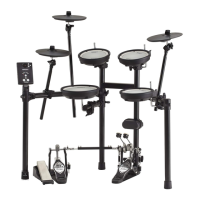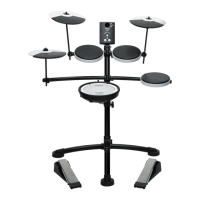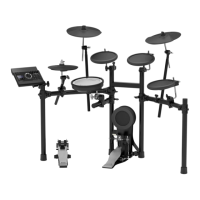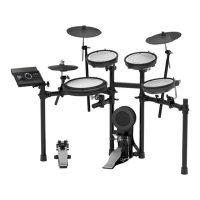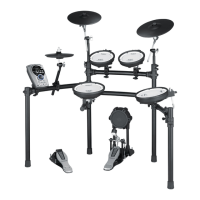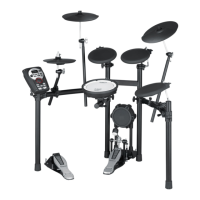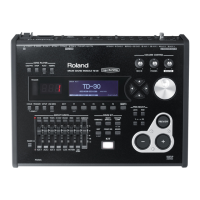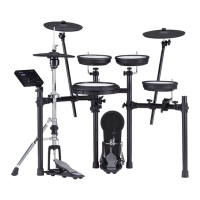■ Positional sensing
This function simulates movement across the snare drum head or ride cymbal surface. A PD-7, PD-
9, PD-100 or PD-120 can be used when connected to trigger jacks number 2 or 10.
fig.00-032e
For the snare drum and ride cymbals, differences in striking position between the center of the head
and the rim area will produce a natural change in tone. When the PD-120 is used as a snare, changes
in tone and response will produce playability rivaling that of an acoustic drum.
■ Playing with brushes
The TD-10 allows you to play using brushes when using a PD-100 or PD-120 only . You can use tech-
niques such as swishing or sweeping to trigger that type of sound, as with an acoustic drum. When
using brushes, you must select a drum kit that is intended for brush playing. Press [KIT], and select
a kit that has a symbol like the following at the lower right of the kit name.
fig.00-033
ONLY use nylon/plastic brushes. Metal brushes will damage the head and/or could pierce the fine mesh of the
head itself.
Of the preset drum kits, numbers 7 and 37 are for brush playing.
■ Hi-hat control pedal
A hi-hat control pedal can be used for the following performance techniques, giving you continuous
control from open to closed positions. This can be done with an FD-7.
fig.00-033a
Open hi-hat: Strike the pad without pressing the pedal.
Closed hi-hat: Strike the pad while pressing the pedal.
Pedalled closed: Step on the pedal to trigger the “foot close” hi-hat.
Pedalled open: Step on, and quickly release pedal to trigger the “foot open” hi-hat sound.

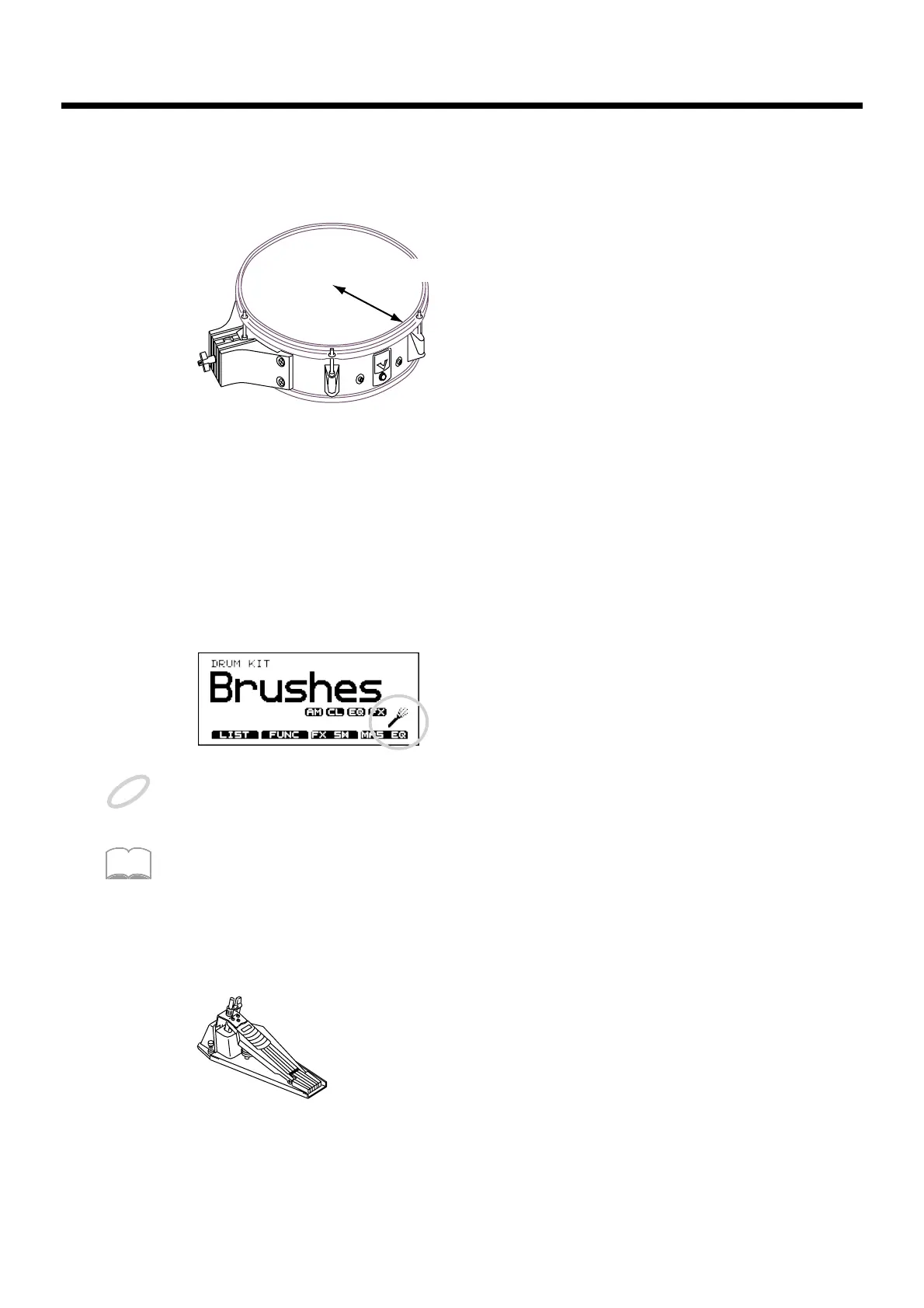